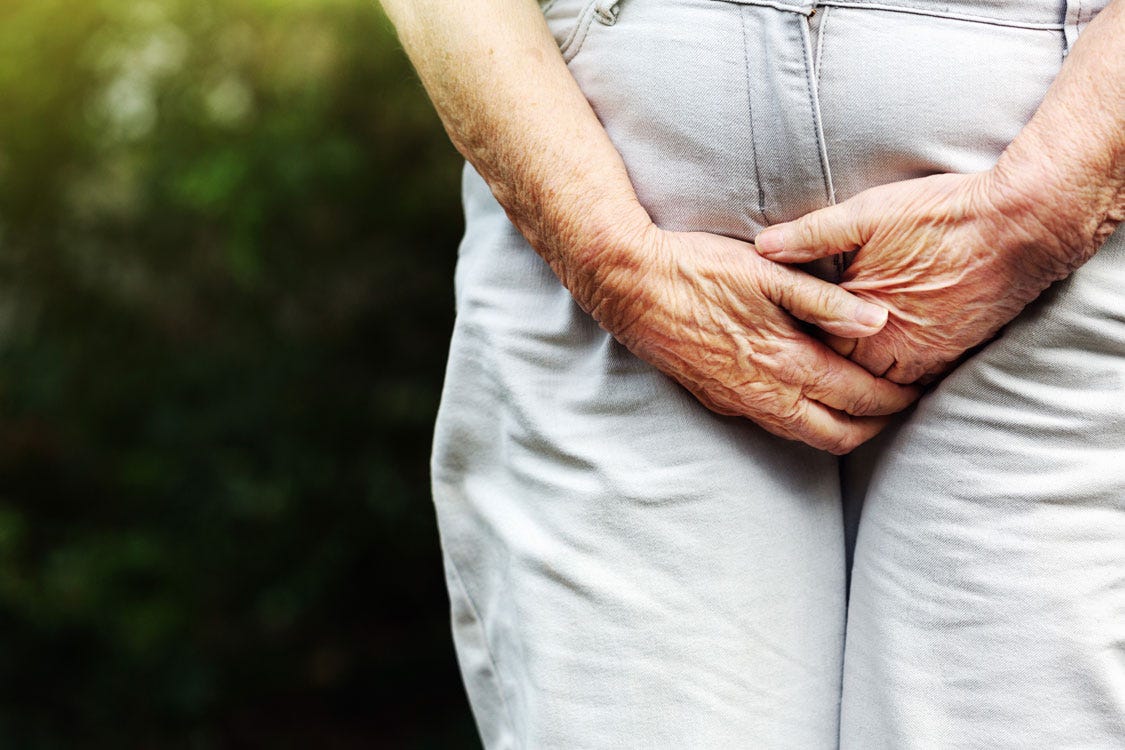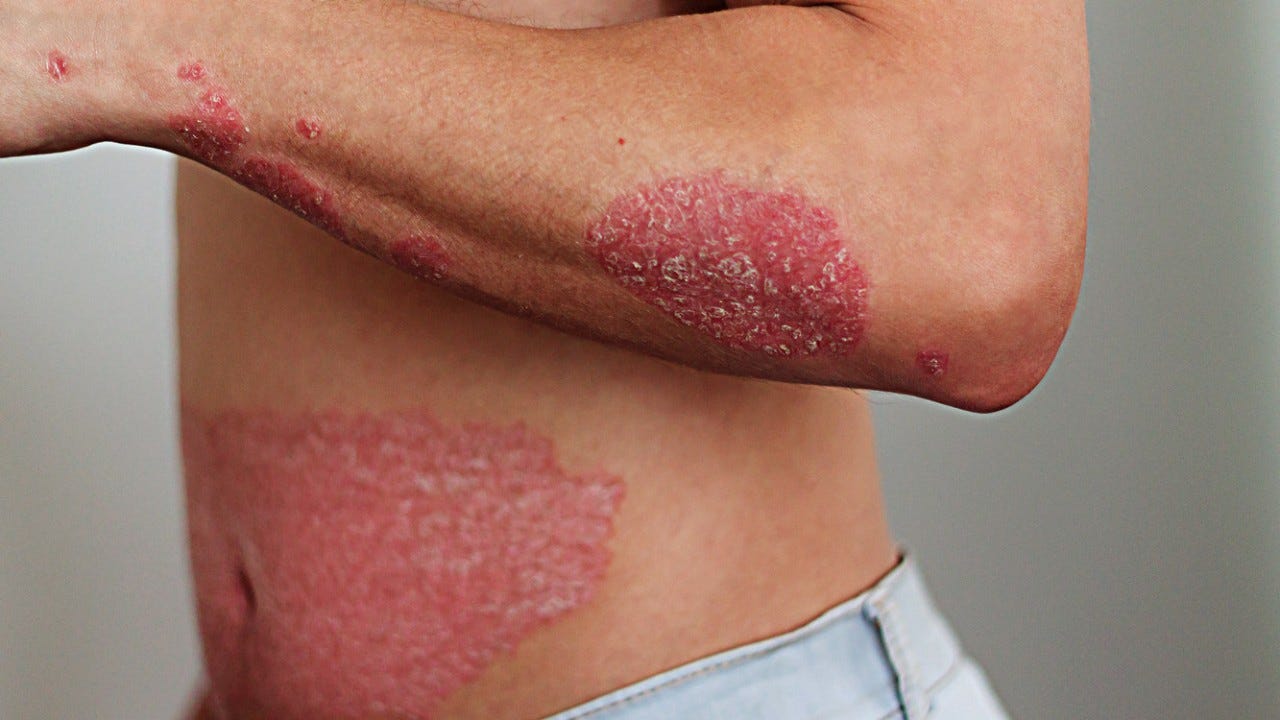Incontinence: When your bladder controls your life
Those affected by incontinence suffer above all emotionally. Shame can cause people to withdraw socially, but that doesn’t improve the situation. Bladder weakness can be treated.

Being able to empty your bladder whenever you feel like it is something most people take for granted. However, those who suffer from incontinence can no longer do this. The result: involuntary urination. and it’s extremely embarrassing for those affected. They often withdraw out of shame, lose their self-esteem and believe they’re less attractive and socially acceptable.
According to the Swiss Bladder Weakness Society, 500,000 people in Switzerland are affected by urinary incontinence. The good news is that Bladder weakness is not an irreversible fate. With the right treatment, uncontrolled urination can be brought under control again.
Urine leakage during physical exertion
Stress incontinence is the most common form of incontinence and mainly affects women. It happens unannounced during sudden physical exertion, lifting, coughing, sneezing or laughing, and is usually caused by weak pelvic floor muscles. This can be congenital or caused by pregnancy, childbirth and oestrogen deficiency during the menopause. The amount of urine that leaks is usually small, because those affected can usually stop the flow. Nevertheless, stress incontinence should still be treated.
Targeted exercises to strengthen the pelvic floor muscles are the first method of treatment. A healthy lifestyle, a balanced diet and a normal body weight also relieve the symptoms of stress incontinence. Surgery is possible, but is often only considered if conventional methods don’t bring sufficient improvement.
Uncontrollable urge to urinate
Unlike stress incontinence, those affected by urge incontinence (also known as irritable bladder or hyperactive bladder) feel the need to release water immediately. This uncontrollable urge often has certain triggers, including stress, worry, cold feet, the sound of rushing water, and the thought of needing to urinate. When this occurs, even the shortest route to the toilet is too far for those affected and a large amount of urine suddenly escapes.
Fear of these situations causes an uncontrollable urge to urinate in many sufferers that extends to numerous everyday situations, massively restricting their quality of life as a result.
Medication is almost always used in the treatment of urge incontinence in order to calm and relax the overactive bladder muscles.
Incontinence in men
Most men suffer from so-called overflow incontinence – a bladder control disorder. Most cases occur after the age of 50 and are often associated with prostate enlargement. Depending on the extent of the problem, it can lead to a narrowing of the urethra, which leads to a build-up of urine in the bladder, with urine constantly leaking out in dribs and drabs. Overflow incontinence can also occur as a side effect of certain medications for the heart or nervous system. It should definitely be examined by a doctor.
If an enlarged prostate causes health problems, it usually has to be surgically removed. Some men notice an involuntary loss of urine even after the operation. In most cases, however, the symptoms subside after some time.
What helps against incontinence?
Not only medication and surgery can alleviate or eliminate the symptoms of incontinence. Pelvic floor exercises or toilet training are also good solutions. However, not all sufferers succeed in getting rid of their incontinence. Those who don’t have little choice but to get used to living with incontinence. Understandably, this is difficult for many because incontinence is often accompanied by self-doubt and anxiety. The good news is that sufferers can navigate everyday life successfully with careful planning, organisation and the right medical aids.
Multifaceted continence training
Specialised continence training – also known as toilet, bladder or micturition training – aims to restore continence, reduce incontinence and improve quality of life without medication or surgery. It often consists of bladder, toilet and pelvic floor training, provides instructions for breathing and relaxation exercises, and teaches those affected to break bad habits caused by their bladder weakness.
Continence training is useful for almost all forms of incontinence – but especially for stress and urge incontinence. The training sessions take place in groups or individually. However, improvement doesn’t happen overnight: patience and consistency are needed.
Strengthening the pelvic floor
Weak pelvic floor muscles contribute to incontinence. Pelvic floor exercises strengthen the muscles and increase control over urination. How long pelvic floor training should last and how many training sessions per day are recommended depends on the form and severity of the incontinence. Of course, you should train at least until the incontinence has disappeared or improved. Initial successes are usually seen after three weeks. However, it can take several weeks before the results are satisfactory. To maintain the effect, the training needs to be continued.
Effective training courses teach incontinence sufferers all the techniques needed for success. Initially, they often practice with an empty bladder, and after a while with a full one. In this way, those affected get a feeling for how well their strengthened pelvic floor supports the closure of the urinary tract.
Some of the exercises are “classics”, such as tensing the pelvic floor muscles while sitting or lying on your back with your legs up. But perception and breathing are also important. Those affected learn to consciously feel their pelvic floor muscles through awareness exercises. Breathing exercises, on the other hand, sharpen their awareness of the relationship between breathing and the abdominal cavity.
Medical aids against incontinence
Thanks to incontinence products, sufferers can lead a largely carefree life and participate in social events. The products can broadly be divided into three groups:
-
Absorbent aids
These products absorb lost urine and prevent stains, odours or skin irritation. They include, for example, pads designed for women and men. Penis pouches may also be suitable for men with mild to moderate incontinence. Incontinence briefs and adult nappies are also available for moderate to severe forms of incontinence.
-
Collection aids
These products collect lost urine safely and inconspicuously outside the body in a bag or bottle. These include urinal condoms for men. They are used for moderate to severe incontinence, can be worn around the clock and are a good alternative to absorbent aids. The collection bags are worn under the trousers on the leg, are inconspicuous and easy to empty.
-
External aids
External incontinence devices are products not used directly on the body, such as aids designed to keep moisture away from bedding, mattresses or upholstered furniture and ensure hygiene. They include, for example, multi-layer bed protection pads and seat covers.
-
Other aids
Incontinence swimwear does not differ in appearance from conventional swimwear but still collects urine.
Good to know: Basic insurance covers the costs of medical aids according to the list of aids and equipment (MiGeL).
Tips for living with incontinence
Accepting incontinence and getting used to it is a big challenge. To cope with this, it is advisable to talk to a doctor about it. After all, you can manage incontinence and regain your own enjoyment of life by taking the right action, relying on professional support and using medical aids.
- Exercise your pelvic floor – preferably regularly and accompanied by a physiotherapist or in a group course.
- Avoid alcohol, caffeine and carbonated drinks. These affect the acidity of the urine and further irritate a sensitive bladder.
- Drink enough water. This sounds paradoxical at first, but it’s important because low fluid intake leads to highly concentrated urine that irritates the bladder.
- Exercise the bladder. Going to the toilet regularly can help keep control over the urge to urinate.
- Exercise and eat a balanced diet. Excess kilos increase the pressure in the abdominal cavity and thus also the pressure on the bladder, which can lead to stress incontinence.


